
Birds Around Las Vegas, Wildlife Around Las Vegas
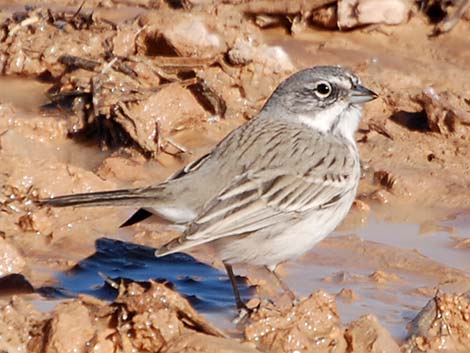 Note gray head, streaked back, and thin gular stripe |
General Description: Sagebrush Sparrows (Artemisiospiza nevadensis) are small, sexually monomorphic, sparrows with a gray head, a white eyeline ahead of the eye, and a white eyering. The throat is white with a gular stripe. The breast is white and unstreaked with a dark central spot. The bill and tail are black. The back is well streaked. In separating Sagebrush Sparrows from Bell's Sparrows during winter, Sagebrush Sparrows have a lighter, gray head (not brown or blue), a well-streaked back (not faintly streaked or unstreaked), and the gular stripe is light (not heavy). Taxonomy: Passeriformes, Emberizidae. Formerly Amphispiza belli. The species recently has been split to two species: Sagebrush Sparrow (Artemisiospiza nevadensis) and Bell's Sparrow (Artemisiospiza belli). Residency: Winter visitor. |
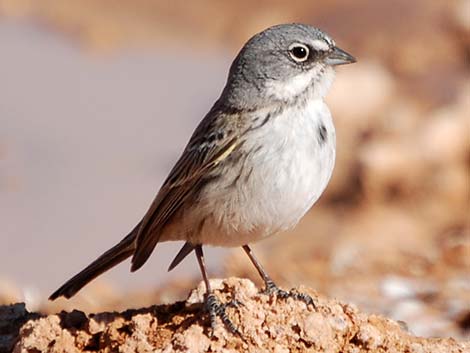 |
Favored Habitat: Open desert with shrubs. Generally speaking, Sagebrush Sparrows breed in sagebrush areas (the Great Basin), while Bell's Sparrow breed in more southerly areas (Mojave Desert, southern California, and coastal California). Both species winter in the deserts around Las Vegas. Where to Find: Around Las Vegas during winter, look for Sagebrush Sparrows at Red Rock Canyon NCA and Corn Creek on the Desert National Wildlife Range. They are also common in the Arrow Canyon Range and Avi Kwa Ame National Monument. Check the saltbrush flats along the access road to Corn Creek during winter. Comments: Sagebrush Sparrows tend to run on the ground hiding behind bushes, and when running, they hold their tail cocked upward like a Northern Mockingbird. Sometimes Sage Sparrows can be found alone, but usually there are found in small flocks where they constantly squabble and chatter among themselves. |
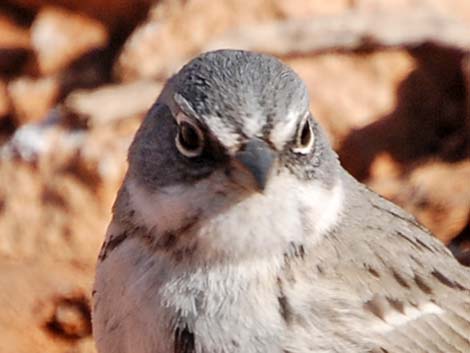 |
If you were a tasty bug or a little seed, this might be the last face you ever see! |
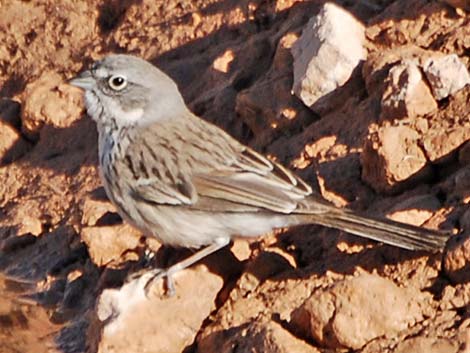 Sage Sparrow: note the heavily streaked back |
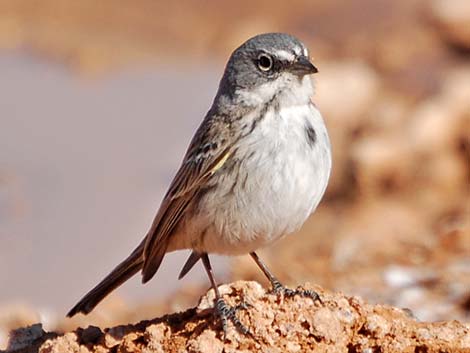 Sage Sparrow: note the gular mark, white eye ring, and central spot |
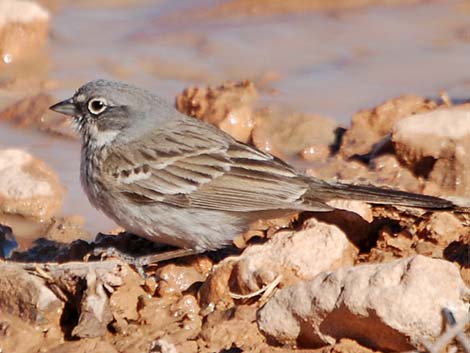 Sagebrush Sparrow finding water in the desert |
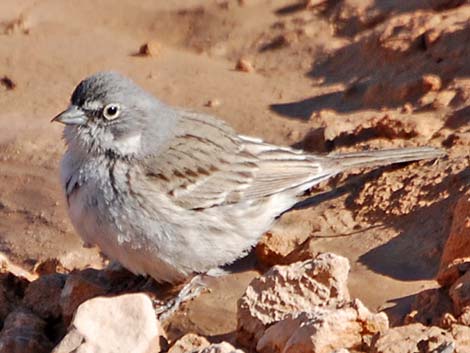 Sagebrush Sparrow finding water in the desert |
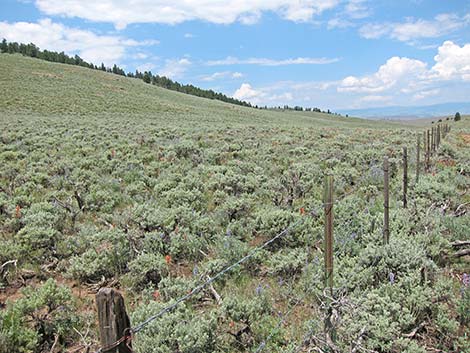 Sagebrush Sparrow breeding habitat: Great Basin |
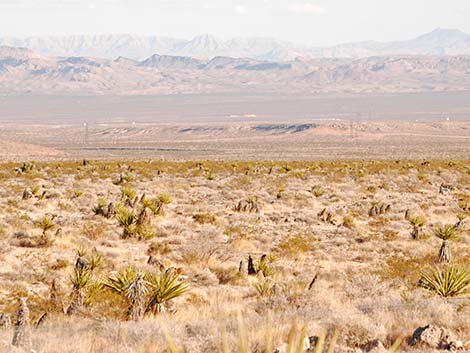 Sagebrush Sparrow winter habitat: Mojave Desert Scrub |
Note: All distances, elevations, and other facts are approximate.
![]() ; Last updated 240708
; Last updated 240708
| Songbirds | Birds Around Las Vegas | Wildlife Around Las Vegas | Glossary | Copyright, Conditions, Disclaimer | Home |